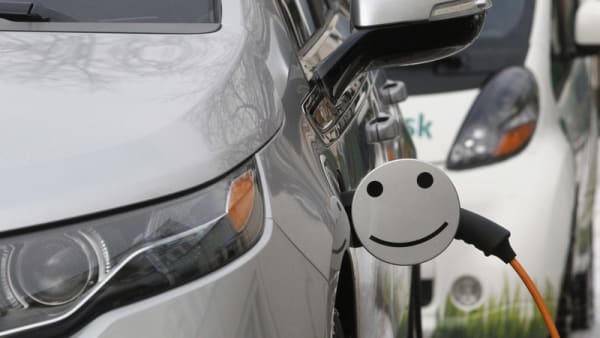The Hidden Battery That Can Leave Your Electric Vehicle Stranded
Electric vehicles (EVs) are becoming increasingly popular due to their environmental friendliness and potential cost savings. However, EVs rely on two batteries: a high-voltage battery for powering the electric motor and a 12-volt battery for powering accessories such as lights, audio systems, and door locks. While the high-voltage battery is often the focus of attention, it's the 12-volt battery that can be the culprit when an EV suddenly becomes inoperable.

The 12-Volt Battery and Its Functions
The 12-volt battery in an EV performs several essential functions, including:

* Starting the high-voltage battery
* Powering the vehicle's electrical systems when the high-voltage battery is not engaged
* Maintaining memory settings, such as radio presets and seat positions
Without a functioning 12-volt battery, an EV may not be able to start or may lose power while driving.

Symptoms of a Weak 12-Volt Battery
The following symptoms may indicate a weak 12-volt battery in an EV:
* Difficulty starting the vehicle
* Dimming lights or other electrical system malfunctions
* Difficulty unlocking the doors or using the key fob
* Warning messages on the vehicle's display
Causes of a Weak or Dead 12-Volt Battery
There are several factors that can contribute to a weak or dead 12-volt battery in an EV, including:
* Extended periods of inactivity: EVs that are not driven regularly may experience 12-volt battery drain due to parasitic power consumption from devices like keyless entry systems.
* Extreme temperatures: Cold weather can reduce the battery's capacity, while high temperatures can accelerate its degradation.
* Electrical faults: Faulty wiring or other electrical issues can cause excessive power drain on the 12-volt battery.
* Age: 12-volt batteries typically have a lifespan of 3-5 years and need to be replaced periodically.
Troubleshooting and Charging the 12-Volt Battery
If you suspect that your EV's 12-volt battery is weak, you can follow these steps to troubleshoot and charge it:
1. Check the battery terminals: Make sure that the battery terminals are clean and free of corrosion.
2. Use a battery tester: A battery tester can help you determine the health of the battery and its charge level.
3. Charge the battery: You can charge the 12-volt battery using a battery charger designed for lead-acid batteries.
4. Jump-start the vehicle: If the 12-volt battery is completely dead, you can jump-start the vehicle using a jumper cable connected to another vehicle's battery.
Preventing 12-Volt Battery Issues
To prevent 12-volt battery issues, you can take the following precautions:
* Drive your EV regularly: This prevents the battery from draining due to extended periods of inactivity.
* Maintain a good charge: Keep the 12-volt battery fully charged, especially during cold weather.
* Inspect the wiring: Regularly check the vehicle's wiring for any damage or corrosion.
* Replace the battery regularly: 12-volt batteries have a limited lifespan and need to be replaced periodically.
While the high-voltage battery is the most critical component in an EV, the 12-volt battery plays a crucial role in ensuring the vehicle's functionality. By understanding the symptoms, causes, and troubleshooting methods related to 12-volt battery issues, EV owners can prevent costly breakdowns and maintain the reliability of their vehicles. Regular maintenance and care of the 12-volt battery will ensure that your EV remains ready to drive when you need it.
